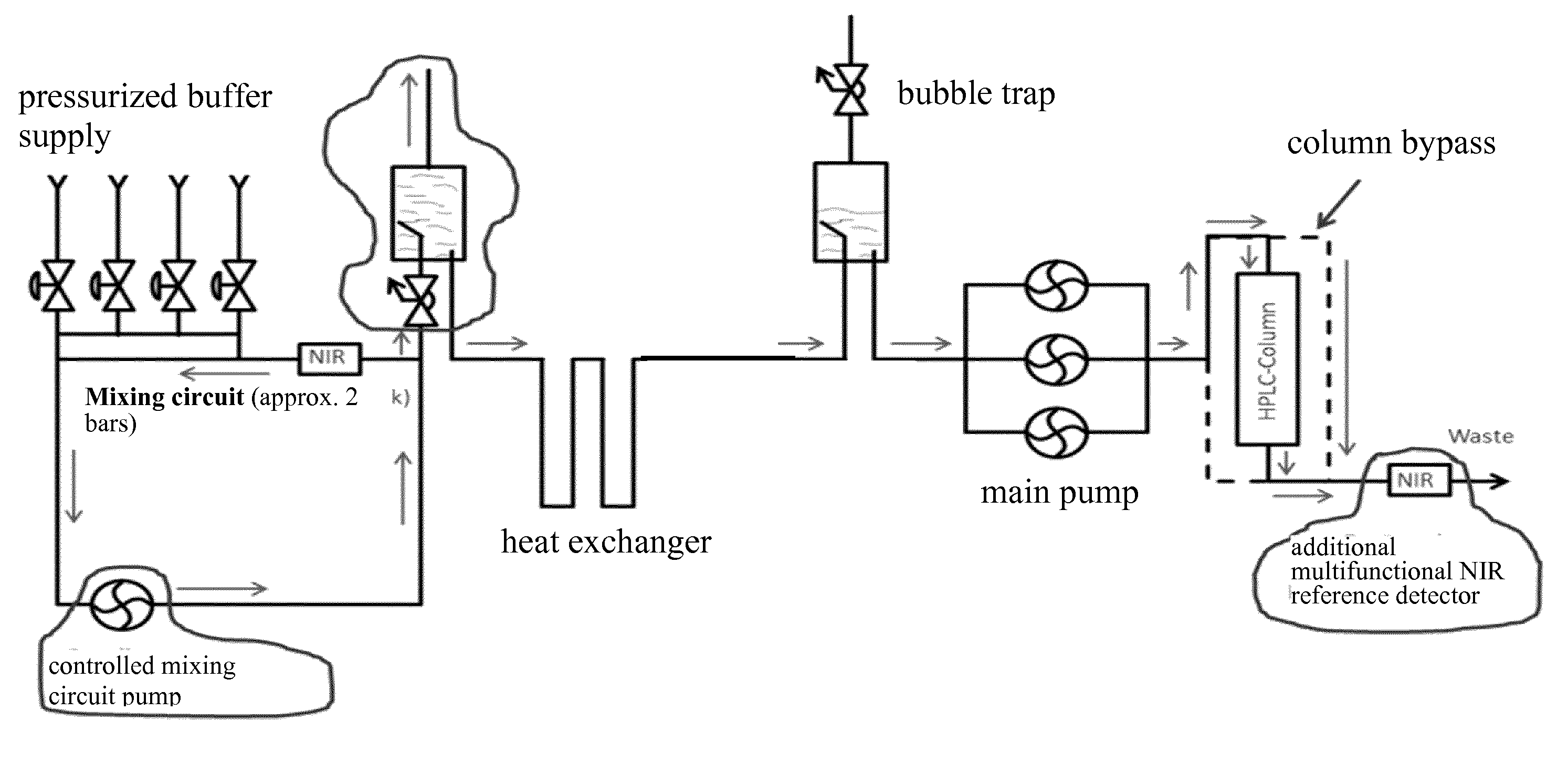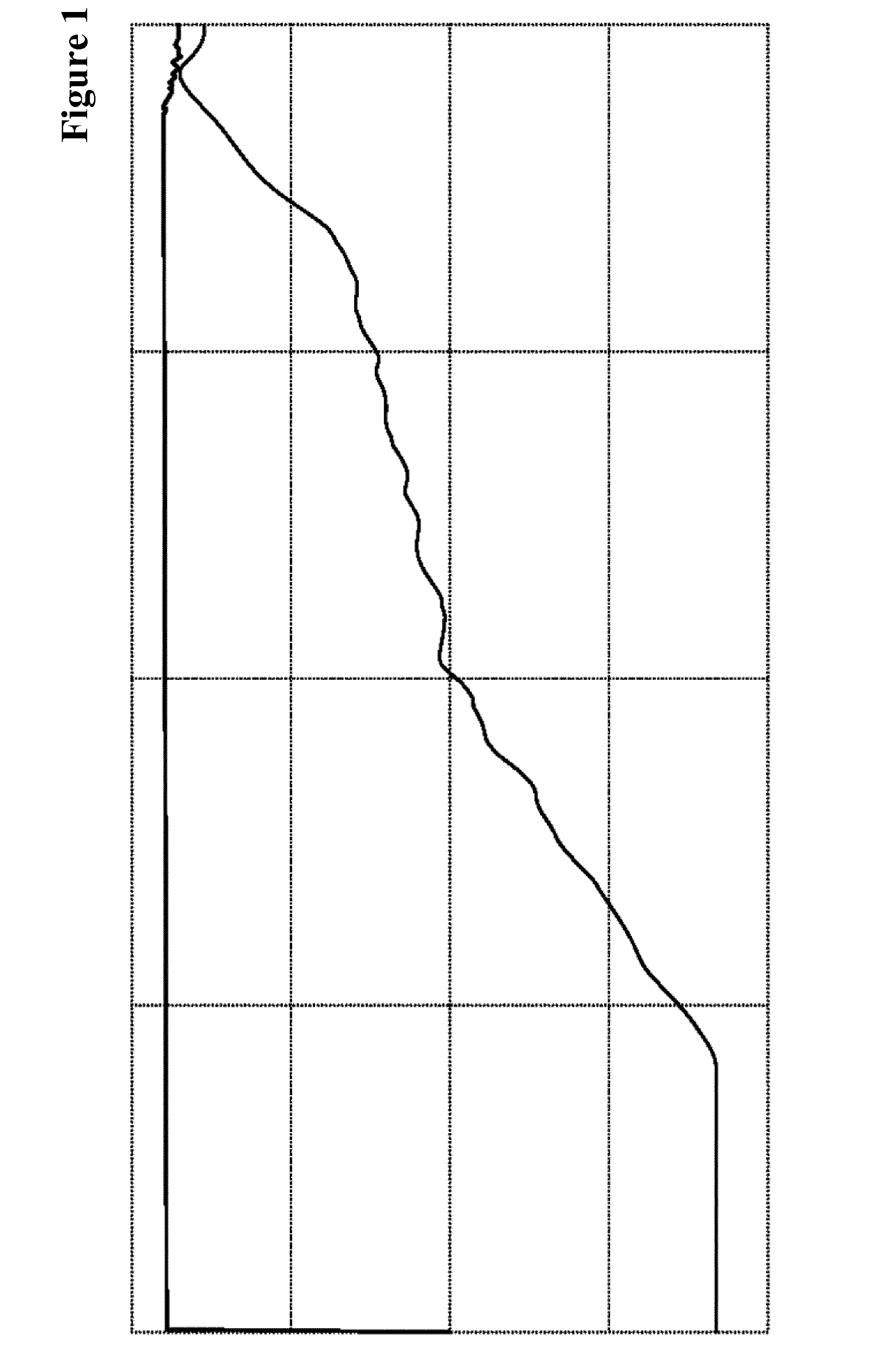Preparative column chromatography system
a chromatography system and column technology, applied in the direction of liquid degasification, separation processes, instruments, etc., can solve the problems of inability to fulfil the complete degassing function of the bubble traps installed in the system, adverse effect on the nir measurement upstream of the chromatography column and correspondingly on gradient formation and reproducibility, and inability to transfer process conditions to analytical or semi-preparative systems. to achieve the effect of adjusting the quality of degassing
- Summary
- Abstract
- Description
- Claims
- Application Information
AI Technical Summary
Benefits of technology
Problems solved by technology
Method used
Image
Examples
example 1
[0095]Differences in the Gradient Time Course in HPLC Systems of Different Designs and Dimensions
[0096]The gradient on an Äkta-HPLC system is exclusively controlled by the defined delivery volumes of the pumps but the actual gradient time course is not taken into consideration. Volume contraction effects are also not taken into consideration.
[0097]The process in a larger production dimension involves adjustment of the buffer composition by means of an NIR detector and consequently the actual buffer composition (gradient) is measured and adjusted.
[0098]The buffer is passed directly downstream of the mixing chamber via the conductivity measuring cell to the NIR detector while bypassing the usual annular valves. It is necessary to increase the flow rate to 60 ml / min because of the large line cross-section in order to have comparable flow conditions. The composition of buffers A and B is the same in both chromatographies.
[0099]The gradient of the previously used separation program was r...
example 2
[0102]Eluent Quantities Discharged by the Bubble Trap Separated from the Mixing Circuit
[0103]Use of an overflowable bubble trap allows excess eluent to be removed from the system in addition to the emitted gases. Since the dimension of the system is in accordance with the maximum column size to be operated, the discharged excess depends on the flow rate that is used and thus on the column diameter that is used.
[0104]When using a column of 30 cm diameter the flow rate is 162 l / h. The overflowable bubble trap is completely filled. Gas and only a small amount of excess eluent must be removed from the system (FIG. 20).
[0105]When using a column of 15 cm diameter the flow rate is 40.5 l / h. The overflowable bubble trap is completely filled. Gas and 121.5 l excess eluent must be removed from the system (FIG. 21).
[0106]When using a column of 10 cm diameter the flow rate is 18 l / h. The overflowable bubble trap is completely filled. Gas and 154 l excess eluent must be removed from the system (...
PUM
| Property | Measurement | Unit |
|---|---|---|
| diameter | aaaaa | aaaaa |
| diameter | aaaaa | aaaaa |
| flow rate | aaaaa | aaaaa |
Abstract
Description
Claims
Application Information
 Login to View More
Login to View More - R&D
- Intellectual Property
- Life Sciences
- Materials
- Tech Scout
- Unparalleled Data Quality
- Higher Quality Content
- 60% Fewer Hallucinations
Browse by: Latest US Patents, China's latest patents, Technical Efficacy Thesaurus, Application Domain, Technology Topic, Popular Technical Reports.
© 2025 PatSnap. All rights reserved.Legal|Privacy policy|Modern Slavery Act Transparency Statement|Sitemap|About US| Contact US: help@patsnap.com



